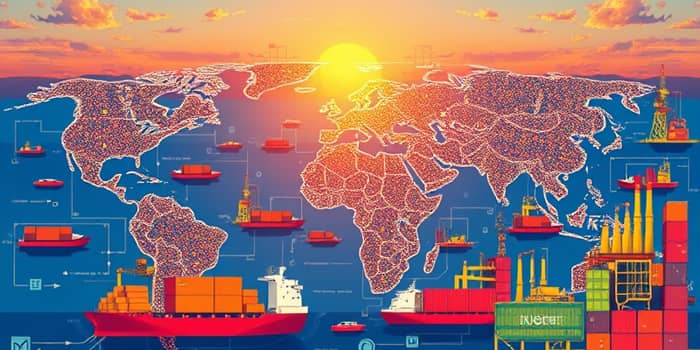
The latest Purchasing Managers’ Index data for May 2025 reveals a turning point in global supply chains. While manufacturing continues to face headwinds, the overall picture is one of gradual but meaningful recovery. Companies and policymakers alike can draw on these insights to build more resilient, transparent, and efficient operations for the years ahead.
According to the J.P. Morgan Global PMI Composite Output Index, activity rose from 50.8 in April to 51.2 in May 2025. At this level, the global economy grew at an annualized rate of 2.0%, marking continued expansion since early 2023—albeit below the pre-pandemic decade average of 3.1%.
Services drove the acceleration, with firms reporting stronger new business and backlogs clearing faster. “The global economic expansion accelerated in May as demand growth improved, though this was limited to the service sector,” noted survey participants. In contrast, manufacturing recorded its sharpest contraction in eight months, reflecting persistent challenges in production and order volumes.
One of the most encouraging developments has been improved supplier delivery times. After severe delays between 2021 and 2023, many regions now report indexes at or above the 50.0 threshold, indicating that lead times are stabilizing.
Inventory dynamics have also shifted. Companies in the United States and elsewhere built up stockpiles in anticipation of tariff changes, leading to inventory accumulation. While this temporarily increased throughput, it also reduced pressure on transport networks, giving logistics providers breathing room to optimize routes and schedules.
Several strategic themes underpin the current stabilization. Businesses are balancing cost optimization with risk management, adopting new technologies, and emphasizing environmental and social governance.
Digitalization and automation have become foundational. Companies deploying advanced analytics, blockchain tracking, and AI-driven decision engines can anticipate disruptions before they occur. For example, generative AI platforms now offer sophisticated tools for predictive planning, enabling rapid scenario analysis when tariff threats or weather events emerge.
By harnessing digital transformation, firms improve responsiveness and collaboration. Shared data ecosystems allow suppliers, manufacturers, and logistics providers to coordinate in near real time, smoothing flows and minimizing stockouts or excesses.
Geopolitical shifts—particularly US trade policies—have prompted firms to diversify sourcing. Many manufacturers front-loaded imports or moved production closer to end markets, exemplifying the rise of supply chain resilience strategies. Nearshoring to Mexico has accelerated, reducing lead times to North American customers and mitigating currency or tariff risks.
In tandem, companies conduct rigorous cost-to-serve analyses, weighing total logistics, duties, and handling costs against margin pressures. This data-driven approach supports intelligent decisions on when to onshore, off-shore, or maintain dual sourcing models for critical components.
To navigate this landscape and capitalize on improving conditions, organizations can adopt the following practical measures:
While the signs of stabilization are clear, vigilance remains essential. Tariff threats, sanctions, and climate-related disruptions persist. Yet the very investments made in resilience—stronger networks, advanced analytics, and transparent partnerships—have laid the groundwork for a more stable future.
As companies refine their strategies, they can view current PMI gains as a springboard for long-term transformation. By embedding adaptability, sustainability, and technology at the core of their operations, they will not only withstand future shocks but thrive amid change.
Ultimately, the story of global PMI data is one of cautious optimism. The rebalancing of supply chain pressures, bolstered by resilient and responsive supply chains, offers a powerful reminder that even the most complex networks can evolve toward stability and strength.
References













